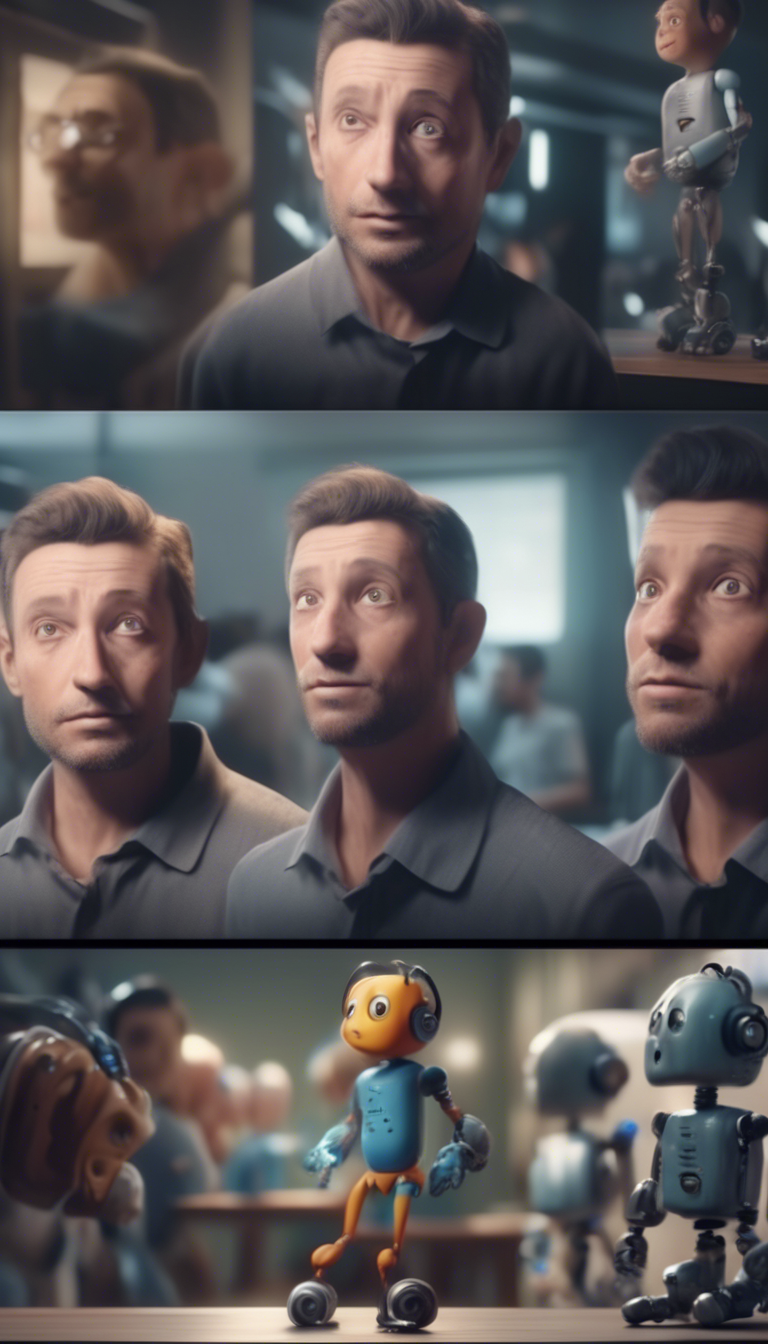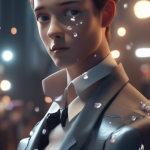The Evolution of AI Animation Movies: How Technology is Shaping Creativity
The landscape of animated films has undergone a remarkable transformation in recent years, largely thanks to advancements in artificial intelligence (AI). With the emergence of AI animation movies, creators are not just telling stories but also redefining how these tales are visualized. From conceptualization to the final product, AI has woven itself into the fabric of animation, providing innovative tools that enhance creativity and streamline production processes.
One of the most significant developments in AI animation is its ability to analyze vast amounts of data. By utilizing deep learning algorithms, AI can study existing animated films to understand patterns, styles, and character movements. This capability leads to more coherent and engaging story arcs, which in turn resonates with audiences on a deeper level. For instance, AI tools can predict which styles might appeal to viewers based on trending aesthetics and story genres.
Moreover, the integration of AI-powered animation software has drastically reduced the time it takes to produce high-quality content. Traditionally, animation was an incredibly labor-intensive process, often requiring a large team of artists to bring a single project to life. However, with AI tools automating many tasks, studios can now create stunning visuals with significantly fewer resources. This democratization of animation allows independent creators to showcase their ideas without needing backing from major studios.
AI animation movies also offer a more personalized viewing experience. Innovations in machine learning enable the creation of responsive characters and environments that adapt to viewers’ interactions. For example, films tailored for children can adjust their narrative based on a child’s reactions, encouraging engagement and interactivity. This shift represents a new frontier in the storytelling medium, where audiences no longer just passively watch but actively participate in the narrative.
Even in traditional animation, AI has carved a niche by streamlining processes like character modeling and rigging. Techniques such as Generative Adversarial Networks (GANs) allow artists to generate character designs that fit the desired aesthetic quickly. Instead of spending hours perfecting every detail, animators can now focus on storytelling and character development, which is the heart and soul of any movie.
Some key elements of AI integration in animation include:
- Automated Character Animation: AI tools can animate characters’ movements based on predefined parameters and learn from previous animations, producing fluid and lifelike motions.
- Facial Recognition: Algorithms can analyze facial expressions in real-time, allowing for dynamic character reactions that enhance the storytelling experience.
- Procedural Generation: AI can generate backgrounds, environments, and even entire scenes based on specific themes, dramatically reducing the workload for artists.
While the benefits of AI animation are undeniably impressive, concerns have arisen regarding creativity and originality. As AI begins to generate content, questions emerge about whether these films can possess the emotional depth and nuances characteristic of human creations. Critics argue that relying too heavily on AI might lead to a homogenization of animated films, where unique voices and stories could be overshadowed by data-driven decisions.
That said, many creators view AI as a collaborator rather than a replacement. By leveraging AI’s capabilities, storytellers can enhance their artistic vision while maintaining their unique voices. The key lies in finding that harmonious balance between human creativity and machine efficiency. Ultimately, the future of animation will likely involve a synergy where AI assists artists in exploring new narrative possibilities without compromising emotional depth.
The advent of AI in animation also raises interesting questions about intellectual property. As algorithms generate original content, who truly owns the creative output? This debate will undoubtedly shape future regulations and norms in the industry, as the lines blur between creator, technology, and the art itself.
As we forge ahead, it’s evident that AI animation movies are not merely a trend but a fundamental shift in the filmmaking landscape. The potential for storytelling is boundless, limited only by the imaginations of the artists working alongside these technological advancements. The evolution of animation is upon us, and its future, enriched by AI, is undeniably exciting.
The Impact of AI on Storytelling in Modern Animation Films
The landscape of animation films has dramatically transformed in recent years, with technology paving the way for innovative storytelling techniques. Among the revolutionary advancements, artificial intelligence (AI) stands out as a key player shaping narratives and character development in modern animation. Today’s animators are harnessing the power of AI not only to enhance visual aesthetics but also to deepen the emotional engagement of their stories.
One of the most significant impacts of AI on storytelling in animation films is its ability to analyze vast amounts of data. By processing information from existing films, scripts, and audience reactions, AI can identify storytelling patterns that resonate with viewers. This data-driven approach allows creators to tailor their stories to meet the tastes and preferences of their target audiences. For instance, AI can suggest plot twists or character arcs that align with viewer expectations, making films more engaging. Additionally, the ability of AI to predict trends can help in crafting stories that appeal to specific demographics, ensuring wider acceptance and success.
Enhanced character development is another facet of storytelling that AI influences significantly. AI tools can analyze character interactions and emotional expressions, enabling animators to create more relatable and multi-dimensional characters. These tools assist in refining dialogues, making them sound more natural and relatable. For example, AI systems can suggest changes to character backstories based on how audiences reacted to similar characters in previous films. This not only enriches the narrative but also creates a stronger connection between the audience and the characters portrayed on screen.
Furthermore, AI technology facilitates real-time feedback during the animation process. By using AI-driven analytics, creators can assess which scenes resonate with viewers even during early screenings. This immediate feedback loop allows filmmakers to refine their narratives in real-time, adjusting pacing, tone, and dialogue before the final release. As a result, animated films can achieve higher levels of audience satisfaction and engagement, as they are crafted with real consumer insights in mind.
The application of generative design and procedural generation techniques driven by AI also opens new doors for storytelling possibilities. These methods enable creators to generate unique environments and scenarios that enhance the visual storytelling experience. For instance, a film could feature a dynamic landscape that changes according to the characters’ emotional journeys, thus visually mirroring the narrative’s core themes. This level of interactivity and adaptation contributes significantly to making animated films more immersive.
- Audience Engagement: AI can tailor content to resonate better with the audience, increasing overall engagement.
- Character Depth: Advanced analytics help refine character traits, making them more relatable.
- Real-Time Analytics: Immediate feedback allows swift narrative adaptations, enhancing the storytelling process.
- Dynamic Environments: AI-driven environments evolve based on character arcs, enriching the viewer’s experience.
The use of AI is not without its criticisms. Some argue that reliance on technology could stifle creativity, as storytellers may become too focused on data-driven approaches rather than pure imagination. However, when utilized effectively, AI serves as a creative partner rather than a replacement. It allows animators to focus on unique storytelling while AI takes care of the heavy lifting regarding analysis and optimization.
Moreover, as animation films increasingly venture into virtual and augmented reality, AI’s role becomes even more pivotal. Interactive storytelling experiences are being shaped by AI, allowing viewers to influence narratives in real-time. This trend presents a new frontier for animators, where the audience can engage with characters and stories in unprecedented ways, further enriching the animation landscape.
Ultimately, AI is redefining the boundaries of storytelling within modern animation films. By enhancing character development, providing immediate feedback, and enabling dynamic environments, AI not only empowers filmmakers but also elevates the viewing experience. As technology continues to evolve, the symbiotic relationship between AI and storytelling will lead to even more innovative narratives that captivate audiences worldwide.
Conclusion
The journey of AI animation movies has been nothing short of revolutionary. As technology continues to evolve, the creative landscape of animated films is being reshaped in ways we could hardly have imagined a few decades ago. From the early days of rudimentary animations to today’s sophisticated and visually stunning AI-generated films, this evolution highlights the dynamic interplay between human creativity and machine intelligence.
Technology has paved the way for storytellers to push boundaries, leading to innovative narratives that reflect contemporary issues, cultural nuances, and complex emotions. The integration of AI not only streamlines production but also opens up new avenues for creative expression. Filmmakers are increasingly utilizing AI tools to enhance their artistic process, resulting in animations that blend diverse styles, vivid colors, and engaging character arcs. This synergy between technology and creativity allows artists to focus on the fundamental aspects of storytelling while leveraging algorithms for technical execution.
One of the most significant ways AI impacts storytelling is through data analysis. By examining viewer preferences and behavior patterns, AI can help filmmakers understand audience expectations better. This data-driven insight leads to stories that resonate more deeply with viewers. Moreover, AI is now capable of generating entire scripts or storyboards based on specific themes, character profiles, or even emotional tones. This ability enhances brainstorming sessions, allowing writers and animators to explore a wider range of possibilities and choose the most compelling storylines for their projects.
The collaboration between AI and human creators also brings forth a unique dynamic in character development. AI algorithms can analyze popular character traits in animation, assisting creators in crafting characters that audiences find relatable and engaging. This method does not replace the human touch but rather enhances it, allowing storytellers to infuse their creations with layers of depth that reflect both technology’s understanding and human emotions.
Furthermore, entity recognition and natural language processing have made dialogues in animated films more natural and fluid. Characters can engage in conversation that feels genuine and authentic, enhancing viewer connection. This is essential in modern storytelling, where character arcs often hinge on their emotional journeys and how they relate to others. AI can deliver nuanced interactions, encouraging viewers to invest in characters’ experiences and growth throughout the narrative.
However, the rise of AI in animation brings its challenges, particularly in maintaining individuality and authenticity. As encourages efficiency, there’s a risk of oversimplifying complex narratives or relying too heavily on algorithms that might favor popular trends instead of innovative storytelling. It’s vital for creators to harness AI while retaining their unique voices, ensuring that the art of storytelling remains vibrant and diverse. Balancing technology’s advantages with the subtleties of human expression will be crucial as we move forward.
Moreover, audiences’ perceptions and acceptance of AI-generated content are evolving. Many viewers are beginning to appreciate the emotional depth and innovative qualities AI can contribute to storytelling. As AI animation movies become more commonplace, there will likely be an increasing demand for diverse narratives that challenge conventional themes and explore underrepresented voices. This shift signals a promising future for inclusivity in animated storytelling, driven by the synergistic relationship between AI and artists.
The evolution of AI animation movies further encourages experimentation, leading to untold stories that challenge norms and push boundaries. As filmmakers embrace these technologies, the potential for uniquely crafted animations expands exponentially. Each new project can become a canvas for creativity, influenced by collective human experiences and enhanced by the precision of AI.
The journey is just beginning. As technology continues to advance, the possibilities for AI in animation will grow, shaping a landscape that invites collaboration, creativity, and groundbreaking storytelling. Embracing this technology doesn’t diminish the art form; rather, it elevates it to new heights, allowing for a richer, more diverse storytelling experience in animation. Future generations will witness this transformation, and it is up to today’s creators to harness the opportunities presented by AI, ensuring that the cinematic world remains vibrant, innovative, and full of surprises. The evolving narrative of AI animation movies not only offers exciting entertainment but also emphasizes the potential for technology to merge with artistic expression in meaningful and transformative ways.


